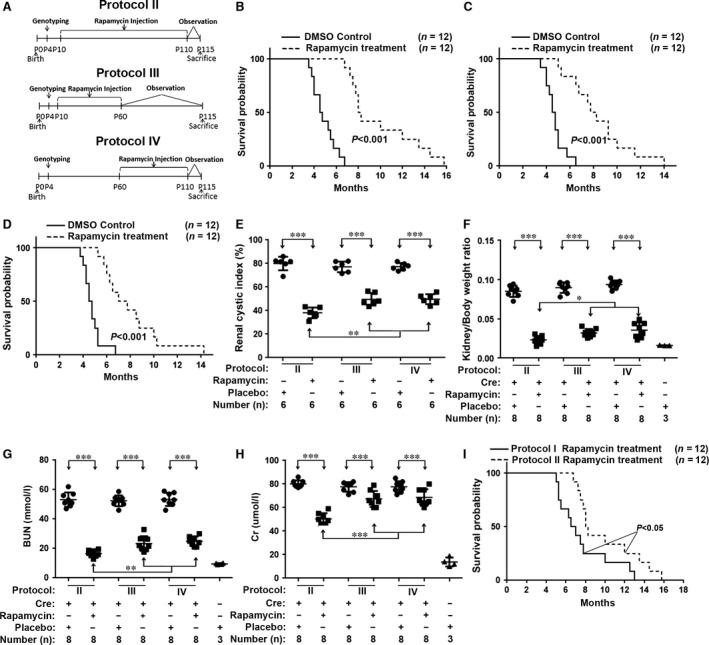Figure 4.

Increasing the dosage or duration of rapamycin treatment significantly improved the prognosis for the Vil‐Cre;Pkd2 f3/f3 mice. (A) Diagram showing the rapamycin treatment protocols (protocols II–IV) used in this study. (B) Kaplan–Meier survival curves showed that the lifespan was significantly prolonged in the Vil‐Cre;Pkd2 f3/f3 mice treated by Protocol II compared with those treated with DMSO (placebo) (P < 0.001); and that (C–D) survival was similarly improved for Vil‐Cre;Pkd2 f3/f3 mice treated with Protocol III versus IV (P < 0.001). (E) The cystic index for kidneys from Vil‐Cre;Pkd2 f3/f3 mice treated with Protocol II, III or IV. Protocol II provided the greatest improvement in the cystic index value (P < 0.01); (F) Kidney/body weight ratios for the same mice were consistent with the cystic index. Protocol II yielded the greatest improvement in the kidney/body weight ratio (P < 0.05). (G) In Vil‐Cre;Pkd2 f3/f3 mice, Protocol II significantly decreased the BUN level compared to that in DMSO (placebo)‐treated mice (P < 0.001). Protocol II decreased the BUN level significantly more than did Protocol III or IV (P < 0.01), returning the BUN nearly to the normal control level. (H) Similarly, Cr analysis of the same mice showed that Protocol II suppressed the abnormal Cr much more effectively than did Protocol III or IV (P < 0.001). (I) Kaplan–Meier survival curves for Vil‐Cre;Pkd2 f3/f3 mice treated with Protocol I or II, showing that Protocol II significantly prolonged the lifespan (P < 0.05).
